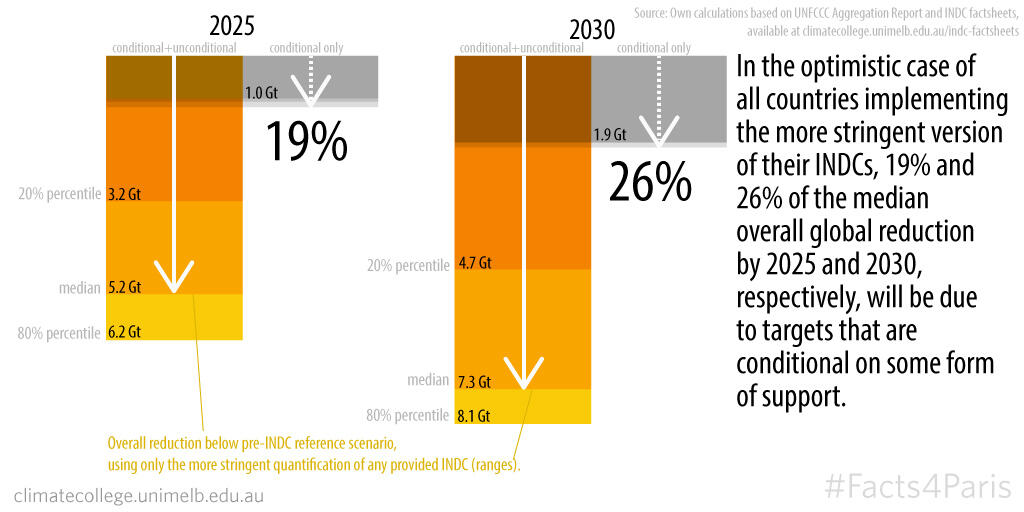Facts4Paris: Of 'best case' emissions reductions pledged in the INDCs, one quarter is conditional on external support.

There are a couple of uncertainties in the emissions reduction targets put forward by countries in their INDCs.
- The first is that many of the INDCs include emissions reduction targets presented as ranges. The Australian INDC, for example, includes a target of 26% to 28% below 2005 levels by 2030.
- The second is that many developing countries have proposed ranges of targets that are contingent on external support. For example, the Argentine INDC includes a target of 15% to 30% below projected business-as-usual emissions by 2030. The 15% target is unconditional. The 30% target, on the other hand, is conditional on foreign finance, technology transfer and capacity building.
- The third is that many of the INDCs are hard to quantify (this could be for any number of reasons such as a lack of data or ambiguity in the wording).
We calculated a scenario whereby every country adopted the more ambitious extreme of its emissions reduction target range and every quantification of uncertain INDCs was resolved towards the more ambitious result. In other words, we looked at a 'best case' scenario of existing INDCs.
We found that 19% of the total emissions reduction by 2025 and 26% by 2030 were contingent on external support.
Even in this 'best case scenario' the aggregation of INDCs is insufficient to bridge the gap to 2°C scenarios.
Note: The gap we describe is the difference between the Cancun Pledges reference scenarios and least-cost 2° scenarios, as assessed by the UNFCCC Aggregation Synthesis Report.
